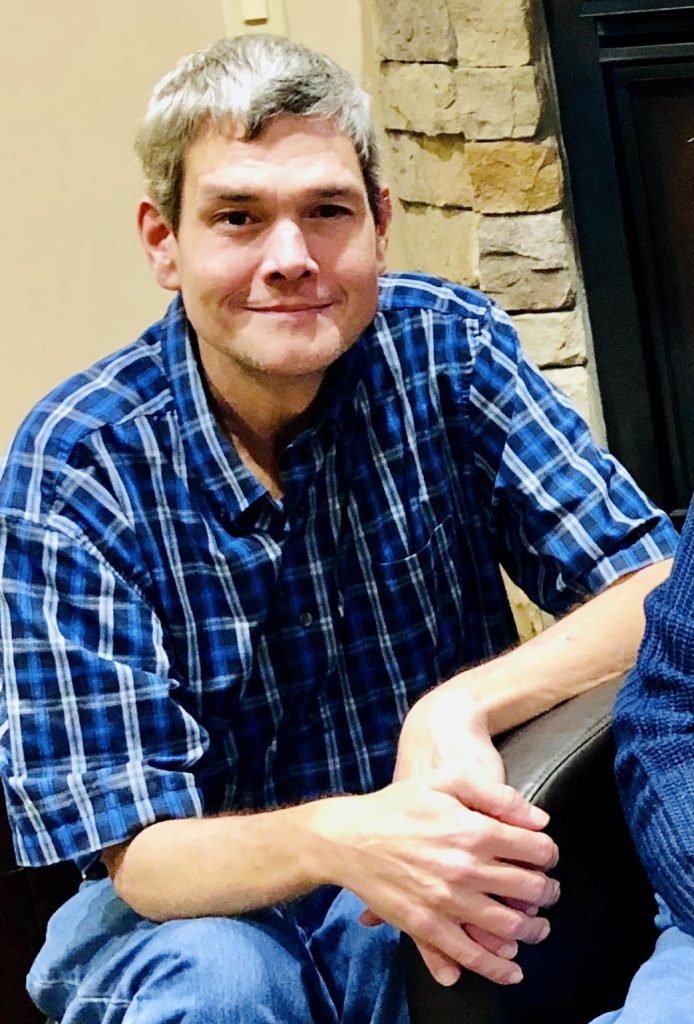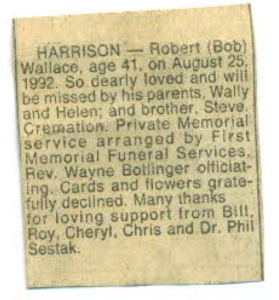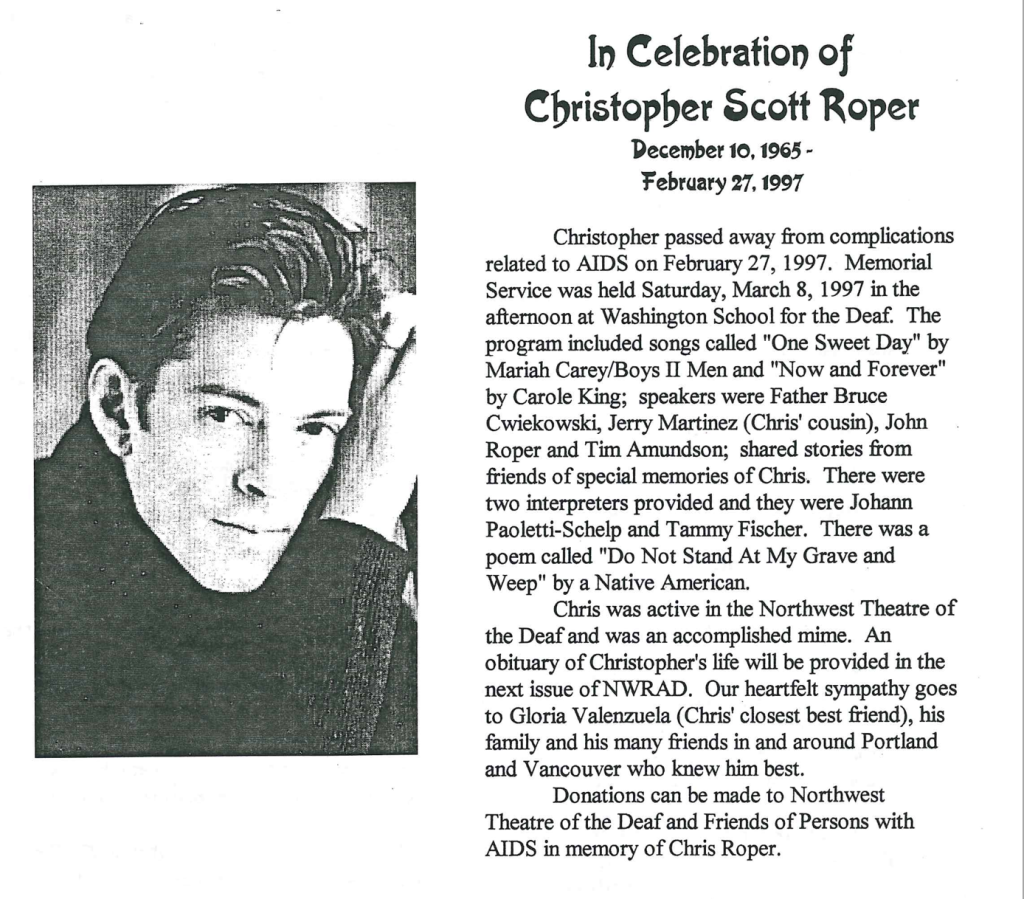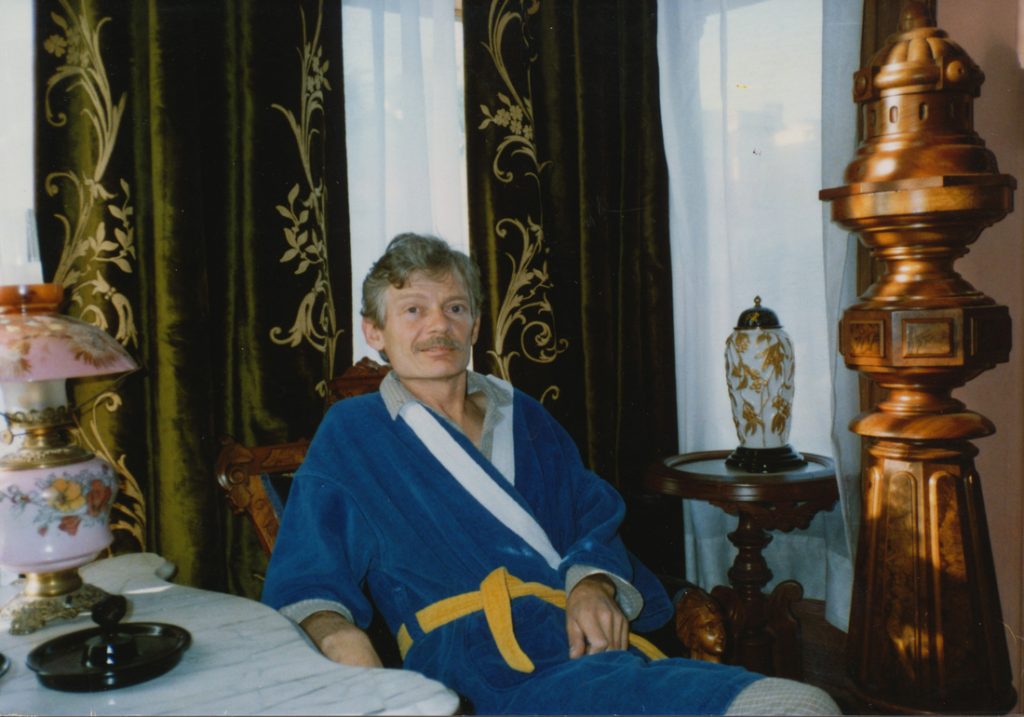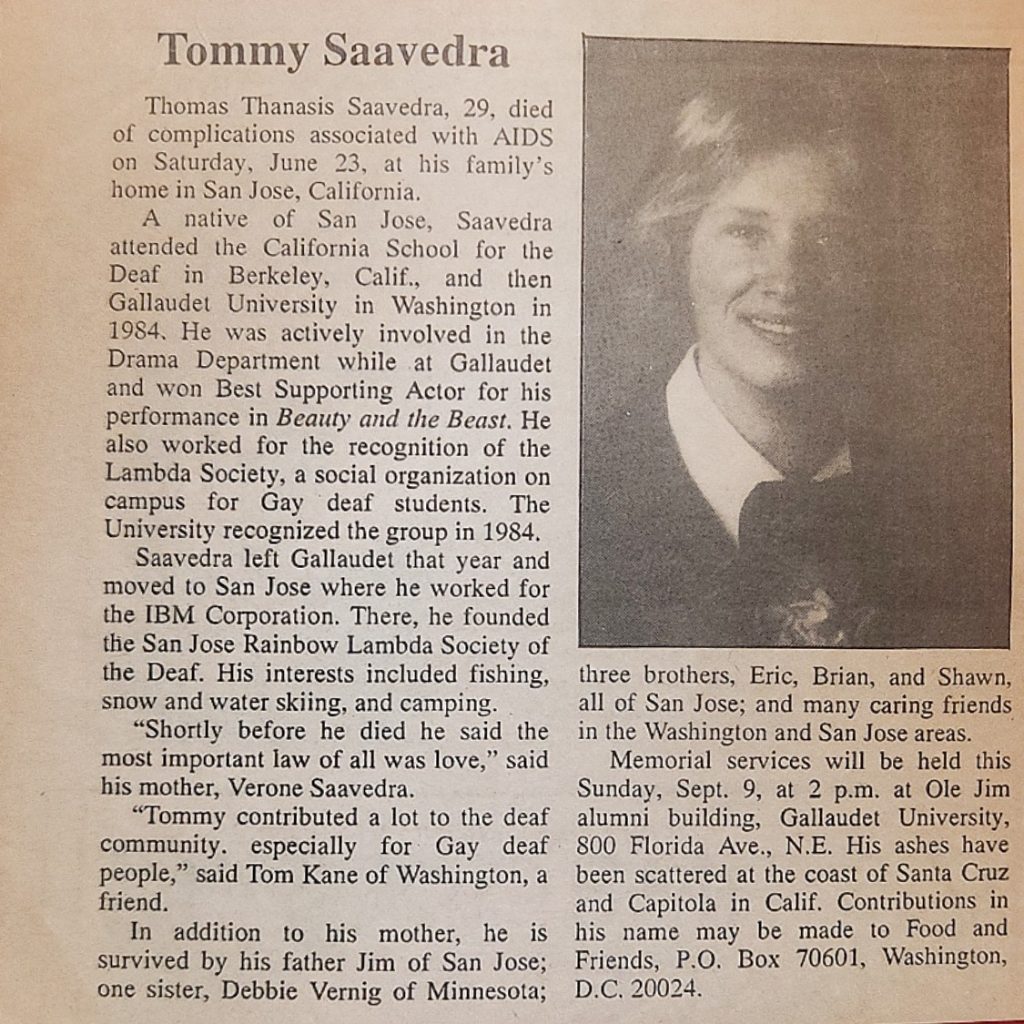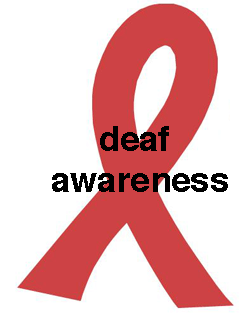Gary Armond Wolford
Gary Armond Wolford of Olathe, Kansas entered into eternal rest on 9 June, 2021. Born 2 June 1972 in Springfield, Illinois to Charles Armon Wolford and Sharlene Fay Schmidt Haney (who precedes him in death), he attended Illinois School for the Deaf (Class of 1990).
Passionate about theatre and performance art, Gary trained with the National Theatre of the Deaf and Bernard Bragg at National Louis University. Gary started a years long career in information technology with the Commonwealth of Pennsylvania from 1992-1994. He then worked for the Family Services Foundation of Baltimore, Maryland, Deaf Stop AIDS project from 1995-2000, first as a web page designer, then as a counselor. Gary was a long time protege and roommate of Harry “Auntie Abbe” Woosley, Jr. Gary served as the ASL consultant for the 2000 film “The Replacements”. He moved to New Orleans in 2000, survived Hurricane Katrina in 2005, then settled in the Kansas City area in 2010.
A proud and out gay man as well as a proud second generation Deaf son, Gary served in leadership roles both in the Rainbow Association of the Deaf in Baltimore and the Missouri Association of the Deaf, Jackson County Chapter. He was also a fierce lifelong Pittsburgh Steelers fan, and will be sorely missed by his beloved dachshund Bell.
Gary is survived by his siblings, John (Joey Stevens) Wolford (San Francisco, CA) and Cathee Wolford (Jefferson City, MO).
Funeral arrangements are in care of Speaks Suburban Chapel, 18020 E. 39th St., Independence, MO. 816-373-3600.
Submitted by John Alan (Jay) Wolford
Clayton Valli
American Sign Language (ASL) is its own beautiful and rich language that has its own unique grammar and syntax. This was proven by linguists at Gallaudet University in the mid-twentieth century. Since then, more aspects of ASL have been defined, including ASL literature. ASL Literature is defined as creative works that have stood the test of time and reflect the deaf experience. These can be visual works, folk lore, plays, legends, or even personal experiences. One significant genre is poetry. These signed works tell stories in visual ways and also have elements of poetry, just like written poetry.
Clayton Valli was a notable ASL poet and linguist who identified aspects of ASL poetry and was a significant community member who contributed to the growing legitimacy of ASL. On May 25, 1951 Clayton L Valli was born deaf in Newburyport, Massachusetts. He was named after his father and had two brothers and two sisters.
Education: First PhD in ASL Poetry
Valli earned his high school diploma from the Austine School for the Deaf in 1971, at the age of 20. The school was located in Brattleboro, Vermont. The first of many degrees that Valli earned during his lifetime was an Associate of Applied Science (A.A.S.) degree in Photography from the National Technical Institute for the Deaf. Next, he finished a B.A. in Social Psychology from the University of Nevada, Reno. His further endeavors led him to Gallaudet University, the only Liberal Arts College for the Deaf in the world. He earned his master’s degree in Linguistics from Gallaudet in 1985. He also later worked at the school as a professor of linguistics and interpreting. After his master’s degree, Valli went on to earn a doctorate degree from the Union Institute in Cincinnati, Ohio. He was the first person to receive a Ph.D. in Linguistics and ASL Poetics.
He gave a lecture on his dissertation at the second National American Sign Language Literature Conference in Rochester, New York. The conference took place March 28-31, 1996. During this presentation Valli expounds on his findings on ASL rhyme and meter in poetry. Valli compared rhyme in a written/spoken language poetry piece to repetition of signs or hand shapes in a visual language. Meter, or stressed and unstressed syllables within words being manipulated, was compared to the innate holds and moves of signs with ASL. He also talked about the richness of ASL poetry in contrast to written poetry. “ASL poetry has two hands you can use to express yourself and they can both be doing separate things, which can add a depth to the message that spoken poetry can’t do when you only have one tongue to use.”2 Valli told the audience about how ASL in its very nature, being a visual language, has more parts that make it a vibrant form of communication.
Scholar of ASL Linguistics
In addition to poetry, his career focused on Sociolinguistics, or the study of how language, such as structure and word choice is impacted by a person’s background, like race, gender, or geographic location. He did presentations and workshop around the US and Canada, teaching people about his findings.
Through his work on ASL linguistics, he authored several books and numerous articles. He co-authored a linguistics textbook specific to ASL titled, Linguistics of American Sign Language, which has been edited and revised many times. Valli also co-wrote three other large works: What’s Your Sign For Pizza?, Language Contact in the American Deaf Community, and Sociolinguistic Variation in American Sign Language. In addition to these, he also worked as an editor for the Gallaudet University Press, including serving as the editor of the textbook The Gallaudet Dictionary of American Sign Language.
Renowned Poet
Valli was a proponent of showing the legitimacy of ASL as a language and ASL poetry as a valid part of ASL Literature, even though there is not necessarily a written form. Additionally, Valli was an ASL poet himself. He wrote and performed many poems including Dandelions, I’m Sorry, My Favorite Old Summer House, Mushroom, and Snowflake, as well as many others.
Watch Valli’s Dandelions Poem:
Since the first recording of sign language in 1913 by Veditz, the use of film and video has been an important way to capture and preserve sign language. Valli is no exception to this, as his collection of poetry titled, ASL Poetry: Selected Work of Clayton Valli is not printed in a book but is only available in DVD format, so it can be viewed in its origin language.
Continued Legacy
Though Valli died from complications related to AIDS in 2003, his work and influence is still significant in the Deaf community even today. His written and signed works continue to be a source of education and entertainment. His textbooks are still used in classrooms and universities today. His poems are studied, analyzed and recreated by students every year. Valli work also inspired other Deaf artists including Bernard Bragg and Nancy Rourke, the notable deaf painter.
Additionally, there are two memorial scholarships in his name at his alma mater and former workplace, Gallaudet University, for students perusing their education. He is greatly missed by the deaf community but his impact as a linguist, poet, scholar, teacher, and author still continues.
Source: Marta Belsky, Signing Savvy
Alan “AlB” Barwiolek
Alan Barwiolek, who helped found the New York Deaf Theater as part of a lifelong campaign to improve things for those in the silent world he was consigned to at birth, died on Wednesday at Roosevelt Hospital. He was 43 and had been associate professor of sign language studies at Union College in Plainfield, N.J.
His companion, Tony Allicino, said that Mr. Barwick, who had AIDS, collapsed and died at the door to the hospital’s outpatient clinic. He had arrived to get a blood transfusion after spending a typically strenuous week conducting workshops and making personal appearances on behalf of the deaf.
In a nation in which 25 million people have some hearing impairment, Mr. Barwiolek, or Al B, as he was known to those who found Barwiolek (pronounced BAR-we-oh-lick) as difficult to sign as to spell, was among the 2.5 million or so who are profoundly deaf, unable to hear at all.
Mr. Barwiolek, a native of Greensburg, Pa., whose parents were also deaf and who had a deaf sister, was known as strong deaf, a term meaning the condition has a strong genetic component. Growing up deaf in a deaf family left Mr. Barwiolek with no sense of personal limitation, although it must have appeared quixotic when, as the first member of his family to attend college, he chose to major in drama with the intention of becoming an actor.
Source: New York Times | Submitted by Gene Bourquin
***
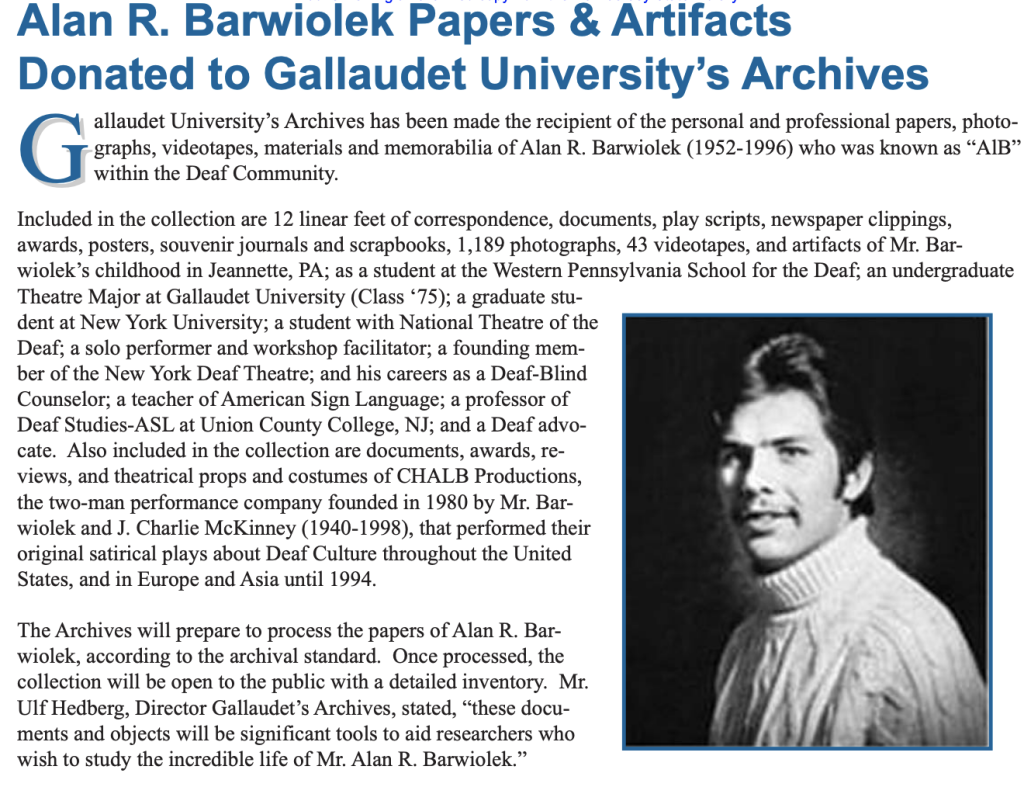
Jack Leo Fennell
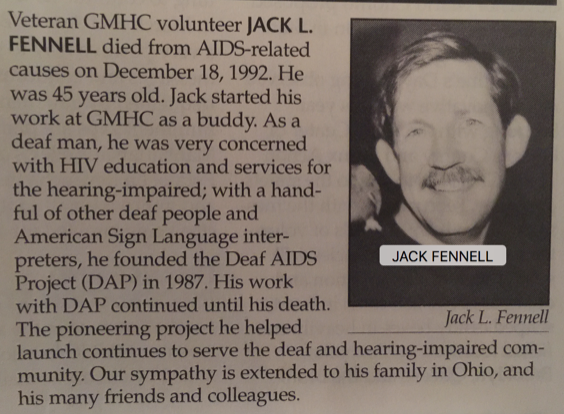
Veteran GMHC volunteer JACK L. FENNEL died from AIDS-related causes on December 18, 1992. He was 45 years old. Jack started his work at GMHC as a buddy. As a deaf man, he was very concerned with HIV education and services for the hearing-impaired; with a handful of other deaf people and American Sign Language interpreters, he founded the Deaf AIDS Project (DAP) in 1987. His work with DAP continued until his death. The pioneering project he helped launch continues to serve the deaf and hearing-impaired community. Our sympathy is extended to his family in Ohio, and his many friends and colleagues.
Submitted by Gene Bourquin
Robert “Bob” Wallace Harrison

HARRISON — Robert (Bob) Wallace, age 41, on August 25, 1992. So dearly loved and will be missed by his parents, Wally and Helen; and brother, Steve. Cremation. Private Memorial service arranged by First Memorial Funeral Services. Rev. Wayne Botlinger officiating. Cards and flowers gratefully declined. Many thanks for loving support from Bill Roy, Cheryl, Chris and Dr. Phil Sestak.
Submitted by Stephen R. Harrison
Donald “Don” Parodi
Donald N. Parodi was a 1960 graduate.
He was especially proud to be a member of the 1960 graduating class as it was an historic period in time. It was the 100th anniversary of the founding of the California School for the Deaf in 1860. He, perhaps more than any other member of the class, appreciated the significance of the school’s long existence and the impact it had on the lives of deaf children.
Parodi came to the Berkeley School in 1946 at the age of seven from a broken family, from a broken family, with no education. At CSD he embraced teachers who provided skills for communication and learning, counselors who accepted and guided him in a residential setting, and classmates with similar problems and attributes. The school was a dream come true and like home for Parodi.
Miss Robinson, supervising teacher of the intermediate department, saw a troubled and lonesome boy. She gave him his first job, straightening books on shelves and cleaning the library. His eyes widened as Miss Robinson handed him his first wages of ten cents for a job well done. She continued to teach him how to manage and save his earnings. Parodi gained a reputation as a good worker.
Soon Principal and Mrs. Myron Leenhouts, who lived in the elegant Victorian house on the campus, hired him as a house cleaner. Each day of work made him more aware of the beauty of rare wood, glass, and china. He began a lifelong hobby of collecting china in the blue Lorne pattern; dishes identical to those collected and used by Dr. Warring Wilkinson, head of the school from 1864 to 1909.
By graduation time in 1960, the foundation for Parodi’s vocation had been well established. Sign language was his prime mode of expression. His only published written work in The California News appeared in the last issue of his last year in school, the very last article on the last page.
He wrote: “Since I came to CSD in 1946, I have watched our school change from the old-fashioned, red brick buildings to the new, modern structures which are in Spanish style architecture. Dr. Stevenson had planned for many years to improve this campus. All the old buildings are gone except the principal’s house.
I want to express my appreciation to Dr. Stevenson, Mr. Brick, former dean, the teachers and the counselors for the advice and help given to me through these years that I have been at CSD.”
After graduation Parodi became the house cleaner for the famous Sally Stanford, noted for her Victorian homes in San Francisco and Sausalito. In the 1960’s San Francisco had a building boom and interest in Victorian houses diminished. Many houses were demolished and the rest took a drop in value.
Over the next few years Parodi bought three Victorian flats containing ten apartments. As landlord he did most of the repairs and remodeling himself. Some years later he bought a ranch near Stockton, California.
In the 1970s Parodi returned to the Berkeley campus and found Ralph Neesam and Mildred Albronda exploring a basement room in the high school building. It contained CSD treasures of the past hundred years. The three of them created a school historical committee with the goal of establishing a museum. The goal was setback when it was announced that the school was moving! Of necessity the focus shifted to locating and saving as any objects as possible. A school wide committee was formed to identify and earmark historic items for a museum planned for the new school Parodi volunteered a great deal of his time to this project.
In 1980 the school moved to Fremont and Parodi frequented the new museum for the next nine years stocking it with objects he had collected and repaired broken items. He often said the museum was his real home. As a result of this strong attachment, he established the Donald N. Parodi Memorial Charitable Trust just before he died of a serious illness at the age of 49.
Source: Parodi Charitable Trust
Tommy Saavedra
Thomas Thanasis Saavedra, 29, died of complications associated with AIDS on Saturday, June 23, at his family’s home in San Jose, California.
A native of San Jose, Saavedra attended the California School for the Deaf in Berkeley, Calif., and then Gallaudet University in Washington in 1984. He was actively involved in the Drama Department while at Gallaudet and won Best Supporting Actor for his performance in Beauty and the Beast. He also worked for the recognition of the Lambda Society, a social organization on campus for Gay deaf students. The University recognized the group in 1984.
Saavedra left Gallaudet that year and moved to San Jose where he worked for the IBM Corporation. There, he founded the San Jose Rainbow Lambda Society of the Deaf. His interests included fishing, snow and water skiing, and camping.
“Shortly before he died he said the most important law of all was love,” said his mother, Verone Saavedra.
“Tommy contributed a lot to the deaf community, especially for Gay deaf people,” said Tom Kane of Washington, a friend.
In addition to his mother, he is survived by his father Jim of San Jose; one sister, Debbie Vernig of Minnesota; three brothers, Eric, Brian, and Shawn, all of San Jose; and many caring friends in the Washington and San Jose areas.
Memorial services will be held this Sunday, Sept. 9, at 2 p.m. at Ole Jim alumni building, Gallaudet University, 800 Florida Ave., N.E. His ashes have been scattered at the coast of Santa Cruz and Capitola in Calif. Contributions in his name may be made to Food and Friends, P.O. Box 70601, Washington, D.C. 20024.
Source: Washington Blade | Submitted by Bob Rourke | Transcribed by Nanette Edwards
***

Tommy with Darol Nance. Photograph submitted by Meredith Peruzzi.

